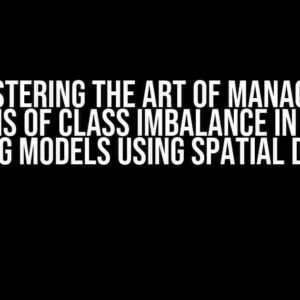Are you curious about how the transformer model’s attention mechanism handles sequences of varying lengths? Look no further! In this article, we’ll delve into the world of sequence-to-sequence models and explore the innovative solutions the transformer model employs to tackle this challenging problem.
Sequence-to-Sequence Models: A Brief Introduction
Sequence-to-sequence models are a class of neural networks designed to process input sequences of varying lengths and generate output sequences of varying lengths. These models have revolutionized the field of natural language processing (NLP) and are widely used in applications such as machine translation, text summarization, and chatbots.
The Transformer Model: A Game-Changer in NLP
The transformer model, introduced in the paper “Attention is All You Need” by Vaswani et al. in 2017, is a type of sequence-to-sequence model that relies solely on self-attention mechanisms to process input sequences. Unlike traditional recurrent neural networks (RNNs) and convolutional neural networks (CNNs), the transformer model does not use recurrence or convolution to process sequences. Instead, it uses self-attention to weigh the importance of different input elements relative to each other.
The Challenge of Differing Sequence Lengths
One of the significant challenges sequence-to-sequence models face is dealing with input sequences of varying lengths. Traditional RNNs and CNNs struggle with this issue, as they are designed to process fixed-length input sequences. The transformer model, with its self-attention mechanism, seems better equipped to handle this challenge. But how does it achieve this?
Self-Attention: The Key to Handling Differing Sequence Lengths
The self-attention mechanism in the transformer model is the key to handling differing sequence lengths. Self-attention allows the model to weigh the importance of different input elements relative to each other, regardless of their position in the sequence. This is achieved through the computation of three matrices: query, key, and value.
Q = W_Q * x
K = W_K * x
V = W_V * x
In the above equations, x represents the input sequence, and W_Q, W_K, and W_V are learnable weight matrices. The output of the self-attention mechanism is computed as:
Attention(Q, K, V) = Concat(head1, ..., headh) * W_O
headi = Attention(Q * WQi, K * WKi, V * WV_i)
In the above equation, h represents the number of attention heads, and W_O, WQi, WKi, and WV_i are learnable weight matrices. The output of the self-attention mechanism is a weighted sum of the input elements, where the weights are computed based on the similarity between the input elements.
Multi-Head Attention
The transformer model uses multi-head attention to allow the model to attend to different aspects of the input sequence simultaneously. This is achieved by computing the self-attention mechanism multiple times with different learnable weight matrices.
The outputs of each attention head are concatenated and linearly transformed to produce the final output:
MultiHead(Q, K, V) = Concat(head1, ..., headh) * W_O
How the Transformer Model Handles Differing Sequence Lengths
Now that we’ve explored the self-attention mechanism and multi-head attention, let’s see how the transformer model handles differing sequence lengths.
Padded Sequences
To handle input sequences of varying lengths, the transformer model uses padded sequences. Padded sequences involve adding a special padding token to the end of shorter sequences to make them equal in length to the longest sequence in the batch.
For example, suppose we have a batch of input sequences with lengths 5, 3, and 7, respectively. We can pad these sequences to a length of 7 using a padding token:
| Sequence 1 | a, b, c, d, e, |
|---|---|
| Sequence 2 | f, g, h, |
| Sequence 3 | i, j, k, l, m, n, o |
Masking
To prevent the model from paying attention to the padding tokens, a masking mechanism is employed. The masking mechanism involves multiplying the padding tokens by a large negative value (-1e9) before inputting them into the self-attention mechanism.
This ensures that the model does not attend to the padding tokens, as they have a very low attention weight.
Benefits of the Transformer Model’s Attention Mechanism
The transformer model’s attention mechanism offers several benefits over traditional RNNs and CNNs:
- Parallelization**: The self-attention mechanism can be parallelized easily, making it much faster than RNNs and CNNs.
- Handling Differing Sequence Lengths**: The transformer model can handle input sequences of varying lengths without modifications to the model architecture.
- Improved Performance**: The transformer model has been shown to outperform traditional RNNs and CNNs in many NLP tasks.
Conclusion
In this article, we’ve explored the transformer model’s attention mechanism and how it handles differing sequence lengths. The self-attention mechanism, combined with multi-head attention and padded sequences, allows the model to process input sequences of varying lengths efficiently and effectively. The transformer model’s ability to handle differing sequence lengths has revolutionized the field of NLP, enabling the development of powerful sequence-to-sequence models.
By understanding how the transformer model’s attention mechanism works, you can unlock the full potential of sequence-to-sequence models and tackle complex NLP tasks with ease.
Frequently Asked Question
Get ready to dive into the fascinating world of transformer models and their attention mechanism! In this FAQ, we’ll explore how this mechanism deals with differing sequence lengths.
How does the transformer model’s attention mechanism handle sequences of varying lengths during training?
During training, the transformer model’s attention mechanism uses a clever trick called “padding.” It adds special tokens to the shorter sequences to make them equal in length to the longest sequence in the batch. This way, the model can process sequences of varying lengths simultaneously without any issues.
What happens to the attention weights when dealing with sequences of different lengths?
The attention weights are computed relative to the sequence length. When dealing with sequences of different lengths, the attention weights are normalized to ensure that the model focuses on the relevant parts of each sequence, regardless of its length. This normalization process prevents the model from biasing towards longer sequences.
How does the transformer model’s attention mechanism handle out-of-bounds indices when dealing with shorter sequences?
When dealing with shorter sequences, the model uses a technique called “masking.” It sets the attention weights for out-of-bounds indices to a very low value, effectively ignoring those positions. This ensures that the model doesn’t attend to padding tokens or indices that don’t exist in the original sequence.
Can the transformer model’s attention mechanism handle sequences of varying lengths during inference?
Yes, the transformer model’s attention mechanism can handle sequences of varying lengths during inference. Since the model is trained on padded sequences, it can process sequences of any length during inference, as long as the maximum sequence length is not exceeded. The model will simply ignore the padding tokens and focus on the actual sequence content.
Are there any limitations to the transformer model’s attention mechanism when dealing with extremely long sequences?
Yes, the transformer model’s attention mechanism can become computationally expensive and memory-intensive when dealing with extremely long sequences. This is because the attention mechanism needs to compute and store attention weights for each position in the sequence. To mitigate this, researchers have developed various techniques, such as sparse attention, hierarchical attention, and others, to reduce the computational cost and memory usage.



